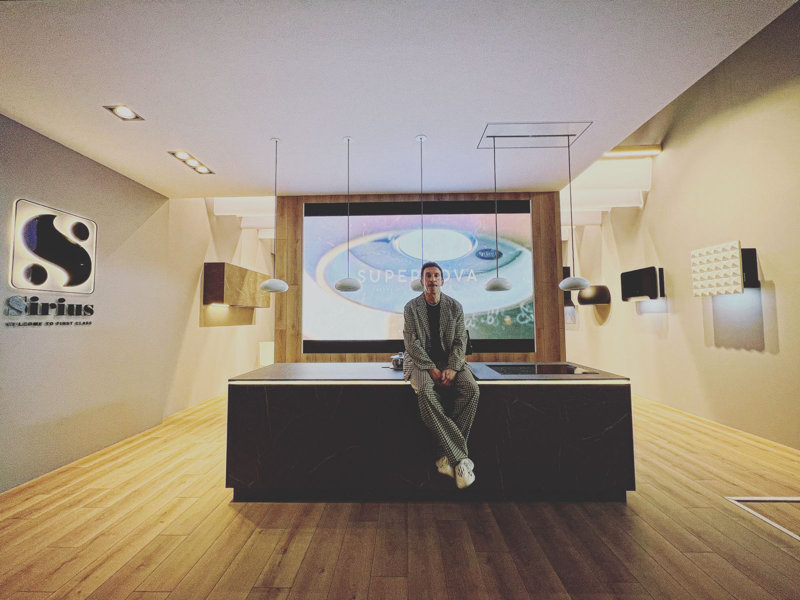The design of Sirius cooker hoods
Creativity, design and technology come together to create a timeless product
Kitchen hoods have become a real design element over the years. The kitchen space is now more inhabited than ever, it has become a space for conversation, for sharing.
The hood is much more than an appliance, a true design and furniture element. It must be part of a more studied, deeper and customised concept capable of expressing, like all the furnishings in the home, the very soul of those who lives there.
It must fit perfectly into the architecture of the kitchen area, but it must also translate into an emotion, into an autonomous and characterising identity.
Giacomo Fava, who has been following the development of Sirius cooker hoods for years, explains just how the design concept is interpreted by the Sirius brand.
1. Giacomo, what is creativity for you?
Creativity is the very essence of innovation. It is the ability to see the world not only for what it is, but for what it could be. For me, creativity is a kind of alchemy, a magical process in which the ordinary is transformed into the extraordinary. It is the spark that ignites the imagination, pushing us to explore new possibilities and challenge the limits of the conventional. Without creativity, design would be soulless and devoid of vision.
2. And how do you turn ideas into design?
The transformation of ideas into design starts with careful observation and a deep understanding of people's needs and desires. Each project starts with a concept, a vision that takes shape through sketches, models and prototypes. I work closely with multidisciplinary teams, merging my insights with advanced technical skills. The key is to continually iterate, experiment and refine, until the initial idea materialises in a design that not only satisfies functional needs, but also arouses emotion.
3. Where do your ideas for new hoods come from?
Ideas for new hoods come from the intersection of tradition and innovation. I draw inspiration from nature, art, culture and emerging technologies. Each design is a response to contemporary challenges, such as sustainability and energy efficiency, but it is also a tribute to timeless aesthetics. I listen carefully to clients' stories and needs, trying to translate their wishes into unique solutions that stand out for their elegance and functionality.
4. How does design manage to keep up with increasingly cutting-edge technologies? And how does it manage to reconcile with them?
Design and technology are intrinsically linked. To keep up with cutting-edge technologies, it is crucial to be constantly updated and open to innovation. I collaborate with experts in the technology sector to integrate advanced solutions into my designs. This allows me to create products that not only meet current needs, but also anticipate future trends. The reconciliation between design and technology is achieved through a harmonious balance: technology must be at the service of design, enhancing the user experience without ever overpowering it. In this way, each creation becomes a functional work of art, capable of enriching people's lives.
